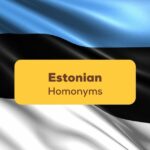Language constantly evolves to express human experiences and describe diverse cultures. One key part of communicating is pluralization. In the Khmer language, mastering the art of making Khmer words plural is like infusing a spectrum of colors into your sentences. This skill adds depth to your spoken and written communication.
In this post, we’re going to explore plural Khmer words. Just as adverbs enhance speech nuances, so do plurals empower us to paint our expressions with precision in the beautiful canvas of Khmer. Whether you’re engaging in language learning to enhance your language skills or specifically aiming to learn Khmer for a journey to Cambodia, grasping the intricacies of pluralization adds a new layer of mastery to your linguistic endeavors.
What Are Plurals?
Think about “dog” turning into “dogs” – that’s pluralization at work. Plurals tell us there’s more than one of something. In Khmer, they add a sprinkle of magic to nouns. So, when “ឆ្មា” (chhma, “cat”) becomes “ឆ្មាឆ្មា” (chhma chhma, “cats”), it’s like the word grew a twin!
Understanding plurals is essential as you embark on your journey to learn Khmer and dive into the depths of the Cambodian language. Mastering basic phrases and grammar rules is the foundation of effective communication. Moreover, getting a grip on Khmer spelling intricacies further enhances your language skills, making you more adept at expressing yourself in this mesmerizing linguistic realm.
Why Do Plurals Matter?
Imagine saying, “I saw a bird” – now imagine, “I saw birds.” Adding that little “s” changes the scene, right? So, getting plurals right makes your message crystal clear.
Khmer is an analytic language, similar to the English language, where word endings play a crucial role. Unlike languages with complex inflections, Khmer verbs maintain their form, making their usual grammatical position important for sentence structure. For Khmer speakers, understanding pluralization aids effective communication in casual and formal contexts.
In English, we often use the addition of “s” or “es” to form plurals, whereas in Khmer, this process can involve changes in word structure or the use of classifiers. Navigating these differences adds depth to your linguistic journey. Additionally, understanding the nuances of subject pronouns and their placement in sentences is key, especially in a formal context.

Making Khmer Words Plural With Ease
In Khmer, there aren’t distinct plural forms designated for nouns. Typically, the context of the sentence will give you a clear indication of whether a noun is singular or plural. This is why pluralizing in Khmer is all about keeping it simple. Unlike some languages that have complicated rules, Khmer keeps things straightforward. Are you ready for this? Here we go!
1. Noun Repetition
One of the simplest ways to turn a singular word into a plural one is to repeat it. Yep, you read that right. Just say the word twice! For instance, “ម្នាស់” (mneasa) means “pineapple,” and if you want to talk about pineapples (more than one), just say “ម្នាស់ ម្នាស់” (mneasa mneasa). Easy peasy, right?
Example: “ការ៉ុត” (karot) means “karot.” To talk about carrots, simply say “ការ៉ុត ការ៉ុត” (karot karot).
Here are other examples of noun repetition for Khmer word pluralization:
| English Translation | Singular (1) | Plural (2 or more) |
| Child/Children | កូន (kaun) | កូន កូន (kaun kaun) |
| Teacher/Teachers | គ្រូ (krou) | គ្រូ គ្រូ (krou krou) |
| Plate/Plates | ចាន (chan) | ចាន ចាន (chan chan) |
2. Adding “ទាំង” (teang)
Imagine you’re at a market, and you want to buy some delicious fruits. Well, you’re in luck! Khmer lets you make words plural by adding “ទាំង” (teang) before the noun. So, “ផ្លែប៉ោម” (phle baom) is “apple,” and if you want to buy apples, you’d say “ទាំង ផ្លែប៉ោម” (teang phle baom). Hungry yet?
Example: “កុងកុង” (kongkong) means “door.” If you want to refer to doors, say “ទាំងកុងកុង” (tang kongkong).
Try the following examples when it comes to adding “ទាំង” (teang) to different nouns:
| English Translation | Singular (1) | Plural (2 or more) |
| Bread/Breads | នំប៉័ង (nombng) | ទាំងនំប៉័ង (teang nombng) |
| House/Houses | ផ្ទះ (phteah) | ទាំងផ្ទះ (teang phteah) |
| Flower/Flowers | ផ្កាស (phka) | ទាំងផ្កាស (teang phka) |
3. Using Numerals
Khmer digits come to the rescue when you’re talking about quantities in Khmer. Want to say “three dogs”? Easy! Just use the number “3” before the word “ឆ្កែ” (chhke), which means “dog.” So, “3 ឆ្កែ” (3 chhke) is “three dogs.” See, math is useful outside of school!
Example: “ចេក” (chek) translates to “banana.” To say “two bananas,” it’s “២ ចេក” (2 chek).
Below, you can find additional instances of using numerals to pluralize Khmer words:
| English Translation | Singular (1) | Plural (2 or more) |
| Mango/Mangos | ស្វាយ (svay) | ៧ ស្វាយ (7 svay) |
| Textbook/Textbooks | សៀវភៅ (sievphow) | ៤ សៀវភៅ (4 sievphow) |
| Pencil/Pencils | ខ្មៅដៃ (khmawdai) | ៦ ខ្មៅដៃ (6 khmawdai) |
Mastering Khmer Plurals
So there you have it, language champs! Making Khmer words plural isn’t so tough after all. Whether you’re ordering street food, bargaining at the market, or simply impressing your friends, you’ve got the tools to rock Khmer plurals.
Now that you’ve got the lowdown on making Khmer words plural, it’s time to practice! Chat with native speakers, explore markets, or strike up conversations in Khmer online. The more you play with the language, the more confident you’ll become.

Learn Khmer With Ling
Ready to unlock the captivating world of the Khmer language? Look no further – the Ling app is here to make learning Khmer a breeze! Dive into a fun and interactive experience that’s like having a language teacher in your pocket. From mastering basic phrases to delving into advanced grammar with ease, our app guides you every step of the way. Don’t miss out on connecting with over 16 million Khmer speakers worldwide.
Download the app on the App Store and Play Store today and let the language adventure begin!



































































